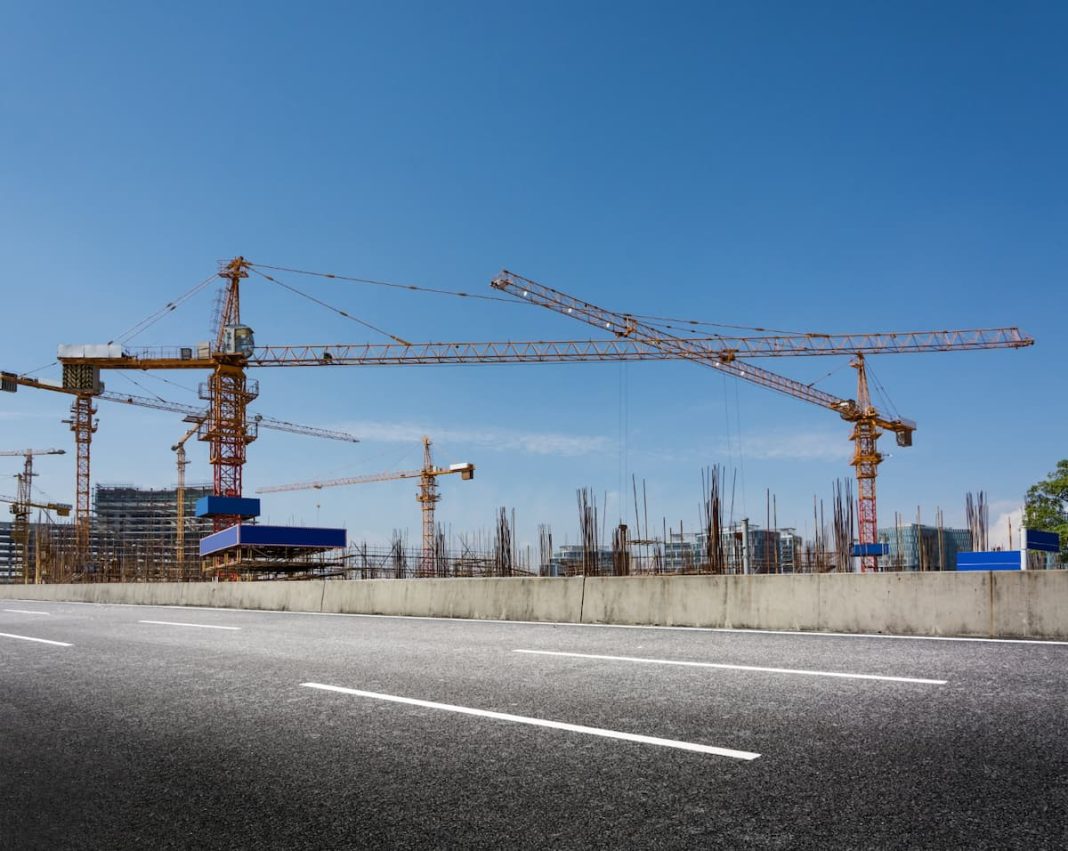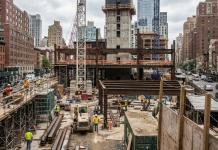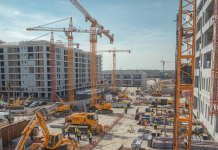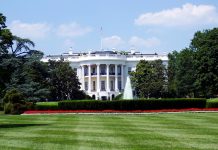In today’s construction news, drivers should anticipate delays and detours due to another round of construction on U.S. 31 that is about to begin. The Indiana Department of Transportation is carrying out the work. Meanwhile, US contractors are uniting behind a plan to establish a dedicated visa route for the construction industry. The initiative is necessary because migrant workers are being subjected to more legal threats by immigration authorities, and projects nationwide are being delayed due to a lack of labor. Lastly, the president often brags about the thriving American auto sector, claiming that new plants in Europe, Canada, and Mexico would soon be manufacturing American-made vehicles for international markets in cities like Paris and Tokyo.
U.S. 31 Construction Resumes in North Indianapolis
Original Source: Construction set to begin again on U.S. 31 in north Indianapolis
As the Indiana Department of Transportation begins another round of construction on U.S. 31, drivers can expect delays and detours.
INDOT spokesperson Jordan Yaney said over 100,000 vehicles utilize U.S. 31 daily, exceeding 2040 traffic forecasts.
“People remember the headache they had 10 years ago with this construction, and now they’re thinking, ‘Oh, wonderful, it’s happening again,’” Yaney said. “We planned for this, but the boom surprised us.”
Since the previous major US 31-465 junction project was finished less than a decade ago, Westfield’s population has expanded by almost 50%.
Yaney stated that sustained development necessitates the expansion of safety and efficiency capacity.
New work involves widening U.S. 31 northbound ramps, adding a lane from I-465 to 116th Street, and compensating for higher traffic.
Phase one, starting this fall, will close the two-mile improvement area many times until spring 2026. That includes:
The southbound U.S. 31 ramp to 106th Street is closed until late December.
Eastbound 106th Street from Illinois Street to U.S. 31 is closed until late December.
The I-465 eastbound ramp to Meridian Street southbound is closed until mid-December.
The adjustments please Heidi Klein, who drives the stretch every day from home to her Carmel clinic.
“There are definitely times of day that it is more congested, and merging lanes does get tricky,” Klein added. Staying in the right lane if you’re slow so others can pass on the left will improve things for people.”
Other drivers were frustrated but hoped the repair would improve travel.
“One driver said that having lanes shut down, especially during the evening rush, is obviously not ideal.” To get off 465 and onto 31 northbound or Meridian southbound, it’s a wild sprint to get to those ramps, he added.
Yaney claimed the project will reduce congestion for years.
“If we don’t address it now, it’ll become more of an efficiency and safety issue,” he warned.
Construction starts early October.
United States Congress Proposes Visa Program to Reduce Construction Labor Shortages
Original Source: US Congress proposes new visa programme to ease construction workforce shortages
Rep. Lloyd Smucker (Republican-Pennsylvania) sponsored the Essential Workers for Economic Advancement Act (EWEA) to create a new H-2C visa program for businesses with labor shortages. Visas would start at 65,000 in the first year and range from 45,000 to 85,000 depending on market conditions.
Visas were limited to places with 7.9% unemployment to preserve domestic jobs. Employers must also prove empty positions for three months or 60 days in 90 days. Applicants needed a registered employer offer and background checks and could not bring family to the US.
AGC CEO Jeffrey Shoaf said the bill meets a genuine need.
In a poll conducted last month, contractors cited staffing shortages as the leading cause of building delays. Shoaf said 92% of construction firms struggle to hire suitable labor.
According to AGC, 45% of businesses blamed project delays on a lack of workers. The contractor trade organization warned that even if government funding for construction training quadrupled tomorrow, schools and training centers would take years to create enough workers.
“Establishing a visa program for construction occupations provides the lawful, temporary, traceable, and taxable pathway needed as a short-term solution while we rebuild the domestic pipeline for preparing new construction workers,” Shoaf said.
EWEA bill and donation incentive
Smucker reintroduced the USA Job Investment Act (H.R. 5493), which would grant donors a $1,700 tax credit for gifts to nonprofit apprenticeship and job training programs. The bill encourages private donations to community institutions, union-affiliated training centers, and others.
He observed that the federal government spends US$111 billion on four-year degrees and $28 billion on professional and technical education.
Shoaf said AGC and its 28,000 members will aggressively advocate for both measures, asking lawmakers to act promptly.
The National Roofing Contractors Association, Associated Builders and Contractors (ABC), Leading Builders of America, and the Construction Leadership Council, as well as other business groups, support the EWEA measure.
ABC stated the act creates a focused, nonfarm, temporary worker visa program with company and employee protections.
The law keeps employment open for American workers first and gives businesses a legal, trustworthy mechanism to fill long-term vacancies.
It tightens border security, implements strict control to prevent misuse, and closes asylum system flaws while giving the construction industry, with serious manpower shortages, flexibility.
Carmakers’ Activities Contradict Trump’s Claims of a US Auto Construction Boom
Original Source: Trump touts a boom in US auto plant construction, but carmakers’ actions tell a different story
President Donald Trump often touts a flourishing U.S. auto sector, fueled by new factories from Canada, Mexico, and Europe that will produce American cars for global markets like Tokyo and Paris.
“Many car companies are currently building or designing new factories. They’re Chinese. Trump declared at a White House gathering earlier this month that they’re from Mexico. A few days later, he mourned the decline of U.S. vehicle manufacture and declared, “Car factories are coming back.”
There is minimal indication of a U.S. car factory construction boom. Automakers are adapting to Trump’s second-term economic agenda of tariffs and anti-EV legislation by making tactical adjustments at existing sites.
Some automakers are retooling idle U.S. factory space to construct imported vehicles subject to tariffs.
Nissan (7201.T), opens new tab, will increase Rogue SUV and other car production in Tennessee and Mississippi and reduce Japanese imports. Japanese cars risk 15% taxes under a tentative Trump administration arrangement.
“Underutilized plants are filled with imported goods. Sam Fiorani, vice president of AutoForecast Solutions, said new builds are not booming.
Turn to gas car spurs investment
Many car manufacturers are backing off their EV commitments from earlier in the decade and focusing on gasoline-powered vehicles. Many of the capital investments corporations have made in recent months are unraveling EV projects they promised under former President Joe Biden.
In June, General Motors (GM.N) announced a suburban Detroit factory retooling.
AlixPartners found that factory investment increased sharply during the Biden administration due to the industry’s massive EV bet that began late last decade. The organization analyzed U.S. capital investments by Detroit automakers GM, Ford (F.N.), Chrysler-parent Stellantis (STLAM.MI), and EV-only players. Tesla (TSLA.O), Rivian (RIVN.O), and Lucid all open new tabs.
These firms spent $21 billion annually from 2017 to 2020, Trump’s first term. AlixPartners reported that Biden’s four years in office averaged $38 billion per year, mostly on EV and battery manufacture.
Even before Trump won the 2024 election, automakers were canceling EV projects due to lackluster demand. Car executives expect Trump government policies to temper battery-powered car enthusiasm.
The administration sees growth in vehicle output and exports.
Tariffs, deregulation, and industrial regeneration are Trump’s economic platform. A White House spokesperson said his trade and energy policies have spurred record car investments and cut regulatory costs by billions.
Spokesman Kush Desai said, “Cars will soon roll off Detroit assembly lines to showrooms in Tokyo, Frankfurt, and Paris” as these measures and President Trump’s historic trade treaties with the EU, Japan, and others take effect.
The White House reports a 10% drop in automotive car, engine, and part imports to $421.4 billion from the first quarter.
Federal Reserve statistics show that U.S. vehicle production has increased by 4% this year, although it is below the 10-year average.
Global Automakers of Canada president David Adams denied Trump’s claim that automakers are leaving Canada for U.S. plants, saying jobs remain stable.
“The idea that everybody is leaving Canada to produce in the U.S. doesn’t jibe with reality,” he said.
Adams said Trump’s tough tariffs could change North American auto output, but “We’re not there yet.”
Summary of today’s construction news
In summary, the new construction includes the expansion of ramps to northbound U.S. 31, the addition of a lane from I-465 to 116th Street, and adjustments for increased traffic flows. Starting this fall, the two-mile upgrade area will be closed many times until spring of 2026.
Meanwhile, the lack of available workers caused project delays for 45 percent of businesses, according to AGC. The contractor trade group went on to say that it would take a long time for schools and training centers to turn out enough construction workers, even if federal financing were to be increased tomorrow.
Lastly, new U.S. car manufacturers are being built at a typical rate. In response to Trump’s trade tariffs and anti-EV legislation, the car industry is shifting its focus to making tactical adjustments at current factories. According to Global Manufacturers of Canada president David Adams, employment is remaining stable, contrary to Trump’s assertions that manufacturers are relocating their operations to the United States.








